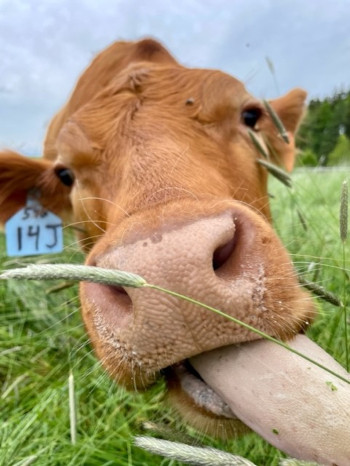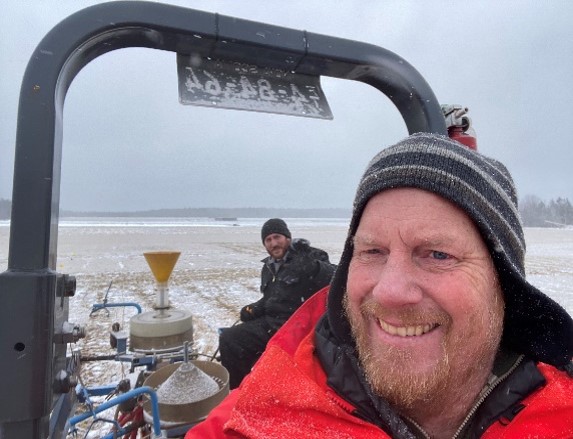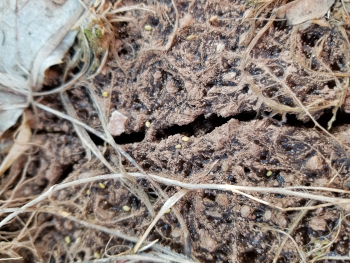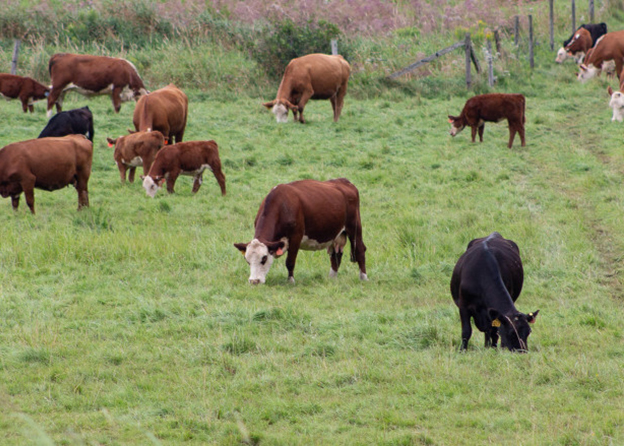For more information
Media Relations
Agriculture and Agri-Food Canada
1-866-345-7972
aafc.mediarelations-relationsmedias.aac@agr.gc.ca
Three researchers from Agriculture and Agri-Food Canada’s (AAFC) Nappan Research Farm in Nova Scotia wrapped up their five-year beef research project and identified some significant discoveries that will help cattle farmers improve efficiency and increase productivity, while reducing greenhouse gas emissions.
Dr. Yousef Papadopoulos, Dr. Kathleen Glover, and John Duynisveld began working on the project with the Beef Cattle Research Council in 2018 to help farmers improve cattle pastures through increasing the legume content of long-term grass stands for either grazing or harvested feed. While this research was lead by AAFC’s Nappan Research Farm scientists, it also garnered national interest with collaborating sites at AAFC research centres in St. John’s (NL), Quebec City (QC), Normandin (QC), as well as Saint Mary's University (NS) and University of Guelph (ON). This project builds on continuous research outcomes from projects completed in partnership with the Beef Cattle Research Council since 2010.

Discovery one: Increasing legumes the ‘cooler’ way with frost seeding
Nutrition is one of the most important aspects of maintaining a healthy life. Just like it’s important for us to eat a well-balanced diet, it’s also important for cows to eat healthy. A cow’s diet mainly consists of a forage mixture of legumes and grass. Legumes are an especially important part of a forage mixture because they provide cows with more protein and improve digestibility, which provides overall better nutrition. Besides being an excellent source of protein, legumes play an important role in our environment. Legumes help to fix atmospheric nitrogen into the soil, which reduces the need for nitrogen fertilizer application and also promotes carbon sequestration.
Grass tends to grow well for farmers in Atlantic Canada, but legumes are harder to maintain. This is an increasing challenge considering the unpredictable impact of climate change in Atlantic Canada. When legumes are lacking in the forage mixture, farmers tend to till their grass stand and re-seed their field, which is a costly practice that releases a large amount of carbon from the soil.

To help farmers increase their forage legume content, decrease nitrogen fertilizer applications, and mitigate climate change, Dr. Kathleen Glover began studying a frost seeding method as part of the beef research project. Frost seeding is a “no-till” method used to help improve pastures by spreading legume seeds in the late winter/early spring to allow snow and frost to work the seeds into the soil. It is not a new technique, but Dr. Glover says it’s not commonly used by farmers because of the little amount of research done on the method, until now!
For the past five winters, Dr. Glover and her team would head out to the field to spread seed on the frozen ground. The team compared Dr. Papadopoulos’ improved birdsfoot trefoil varieties, “AC Langille” and “AC Bruce”, to a commonly used variety, “Leo”, to determine which variety worked the best for frost seeding.
After collecting five years of data and optimizing the timing of the frost seeding technique, the team noticed a considerable improvement to the amount of legume in the forages. Dr. Glover and Dr. Papadopoulos determined that frost seeding using the “AC Langille” seeds increased the legume content by 40 percent compared to the “Leo” variety of birdsfoot trefoil.
“This method requires management, so it’s really important for farmers to establish a routine to reap the benefits of frost seeding. Farmers should clip their forage stand to around 10 cm in the late fall to prepare for frost seeding in late winter/early spring when the ground is still frozen. The earlier farmers can get out in the field to get their seeds down using the frost seeding technique, the more opportunity for freezing and thawing to work the seed into the soil resulting in greater legume content. Using improved legume varieties, like Dr. Papadopoulos’ improved varieties, “AC Langille” or “AC Bruce”, will also make a difference.”
- Dr. Kathleen Glover, research scientist, Agriculture and Agri-Food Canada
Discovery two: The importance of ‘moo’ving cows
Over the last five years, research biologist John Duynisveld studied rotational grazing management in conjunction with legume levels and overall forage yield. Rotational grazing is a technique that involves moving livestock between paddocks to allow grass time to recover while also providing fresh forage.
John evaluated the impacts of moving cows every eight days, every four days, and three times a day. He determined that cows that were moved three times a day actually spent 40 percent more time grazing. That is, those cows grazed about 40 more days over the grazing season when compared to cows that were moved every four days or every eight days. His findings show that farmers who move their cattle three times a day will increase their forage production and reduce the need to supplement feed their cattle but will also be helping the environment by improving soil health and increasing carbon sequestration. He hopes this will encourage more farmers to begin practicing rotational grazing.
“There are a lot of environmental benefits that comes with rotational grazing. Farmers who practice rotational grazing see improved animal health and growth, enhanced pasture growth, quality and re-growth and an extended grazing season. The more you move your cows, the better it is for them, your fields, and our environment.”
- Mr. John Duynisveld, research biologist, Agriculture and Agri-Food Canada
Looking ahead to the next Beef Cluster
The previous Beef Cluster project may have come to an end, but the team has already begun its work on the next Cluster project to take place from 2023-2028. The team will be continuing to investigate:
- how to increase cattle productivity, farm environmental sustainability and carbon sequestration through increased legume content in grass-based forage stands with no tillage.
- how to decrease utilization of drugs for parasite control and slow development of drug resistance in cattle.
- and will continue to collect data on pasture management, animal and soil productivity for carbon sequestration.
Photo gallery


